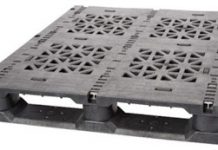Investors did not like Hannon Armstrong’s (NYSE:HASI) fourth quarter earnings announcement last night. While core earnings were a little weaker than expected, that is not what has the stock trading down 11% today. What shocked investors is the fact that the company did not raise the dividend this year for the first time since the REIT went public, and it gave 3 year guidance which likely disappointed many investors.
Last month, I wrote,
I expect that Hannon Armstrong will continue to be a well run and conservative business in 2018, and that management will raise the dividend at the lower end of my predicted range this quarter. The low dividend growth will probably cause the stock to trade flat to slightly down for most of 2018, and patient investors will see excellent buying opportunities in the latter half of 2018.
It turns out that management decided to be even more conservative with its dividend than I expected. (I expected a two cent increase to $0.35, which I thought would disappoint the market.)
Guidance Shock
The new guidance is for “total shareholder returns, on a compounded annual basis over the next 3 years, in the 8% – 12% range.” That means that the company is targeting dividend yield plus dividend growth around 10%. When this guidance was announced, the stock was at $21, so the yield was 6.3 percent, putting target dividend growth at 2 percent to six percent.
The last dividend increase was 10 percent, and I expected a 6 percent increase this year. I think most investors expected an 8 percent to 10 percent increase (which is why I though 6 percent would disappoint.) Clearly, no increase this year and 2 to 6 percent increases in coming years were a shock given these expectations.
Valuation
With the stock currently down 11% at $18.50, investors should upgrade expected future returns. First of all, there is nothing fundamentally wrong with Hannon Armstrong’s business model: The company has simply sacrificed current income in order to better prepare for a rising interest rate environment.
HASI will likely be better prepared for rising rates than most other REITs and Yieldcos, and should be able to profit from the fact that it has locked in the interest rate on 91% of its debt as rates rise and present increasingly attractive investment opportunities.
With this preparation, we can expect that the company will hit its new guidance for the next 3 years. If it does, the company will pay $1.32 in 2018 dividends, followed by $1.35 to $1.40 in 2019, $1.38 to $1.48 in 2020, and $1.41 to $1.57 in 2021.
At the low end of the range, we can expect investors to demand something 8% yield to hold a company that is growing only 2% a year, or a 6% yield to own a company that is growing 6% a year. That gives a target price of $17.62 to $26.17 in early 2021.
Starting at today’s $18.50 price, the current worst case total return over 3 years is 17%, or 5.5% per year. The upper end of the guidance range gives a three year total return of 64%, or 18% on an annual basis. Given the company’s current defensive stance, I expect most surprises to be to the upside, so $18.50 seems like a good price.
Trading
While I have been reducing my allocation to Hannon Armstong over the last six months (see here, and here), I have begun moving cautiously back in with today’s decline. I do not expect the stock to bounce back quickly, however, so readers looking to add to their positions may benefit by waiting a week or two for an even better buying opportunity.
Disclosure: Long HASI, short HASI puts.
DISCLAIMER: Past performance is not a guarantee or a reliable indicator of future results. This article contains the current opinions of the author and such opinions are subject to change without notice. This article has been distributed for informational purposes only. Forecasts, estimates, and certain information contained herein should not be considered as investment advice or a recommendation of any particular security, strategy or investment product. Information contained herein has been obtained from sources believed to be reliable, but not guaranteed.









Hello Tom,
Thanks for this timely little update. Yieldcos, like reits, have sold off quite a bit lately. I currently watch pegi, hasi and ay. Which one of the three would you consider the ‘best bargain’? And which one would you consider to be best prepared for a rising rates & inflationary environment? Are any of their ppa’s inflation-linked? Or is the revenue side of Yieldcos entirely fixed? Well, thats a lot of questions, thanks for any input here!
Michael
Th
HASI is the best prepared for rising rates- most (91%) of their debt is fixed-rate and their contracts are shorter duration. And after the sell-off, I think the price is right.
I personally am at near max allocation of all 3 you are watching.